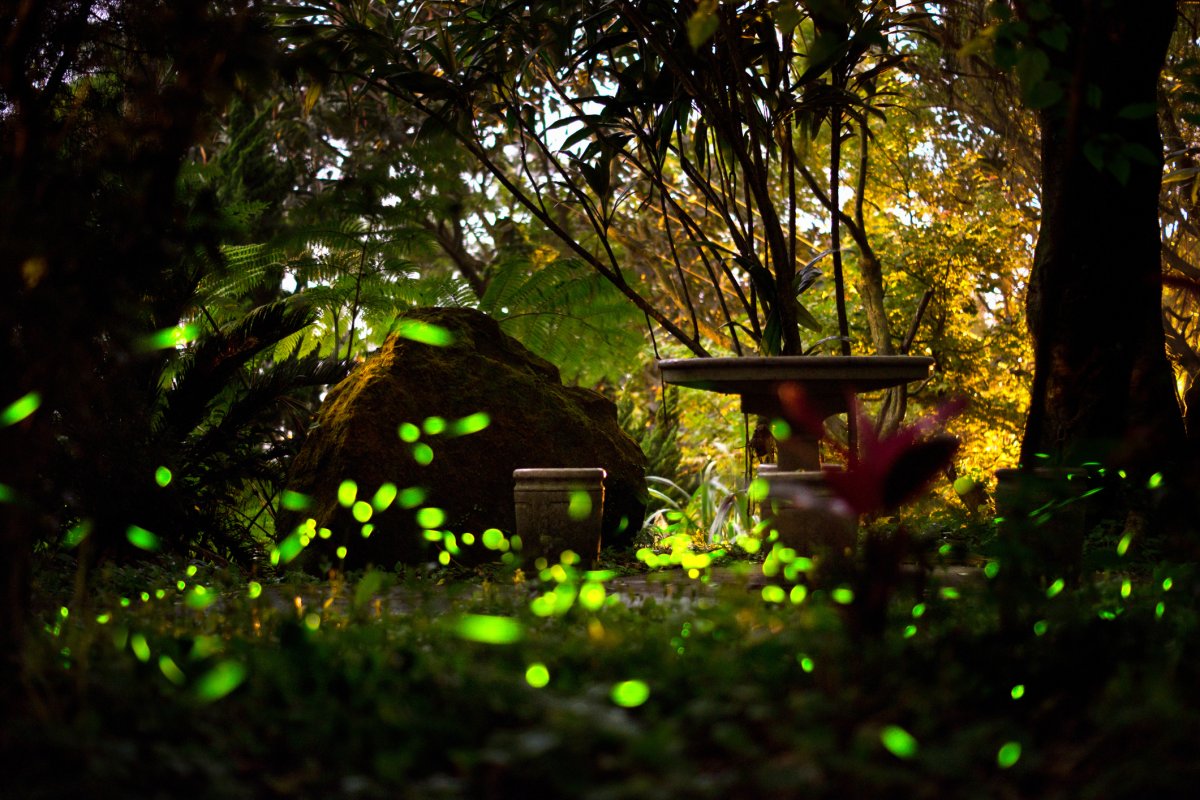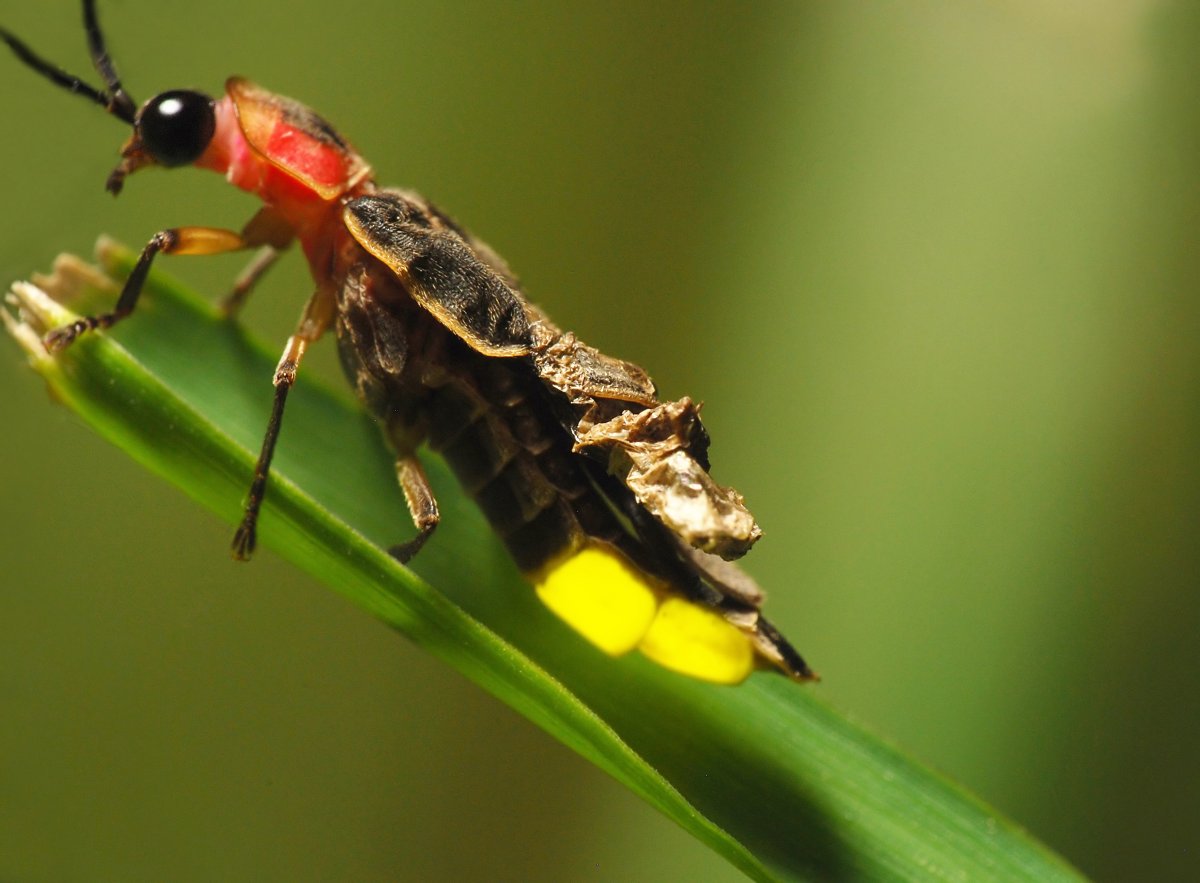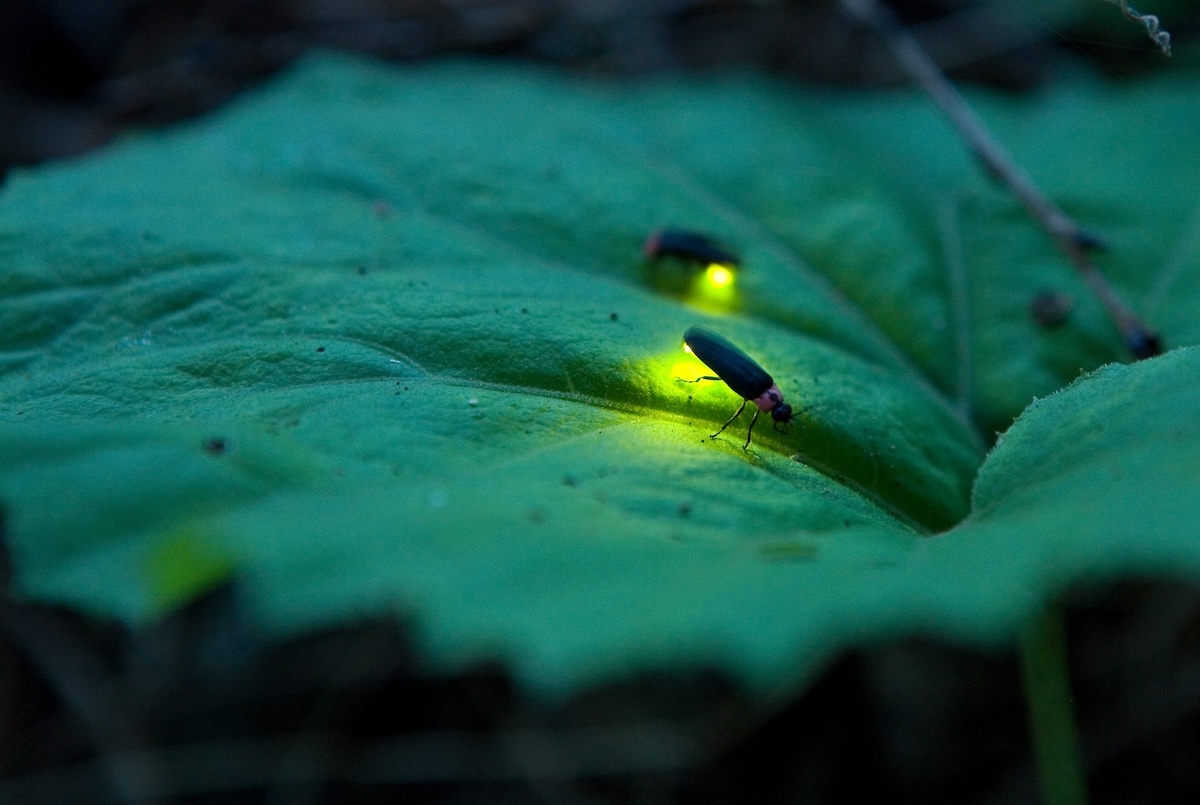

We may earn revenue from the products available on this page and participate in affiliate programs. Learn More ›
Many people—particularly those who grew up in the eastern, southern, or midwestern United States—have joyous memories of chasing fireflies during summer months. The insects, also known as lightning bugs or glowworms, are actually not flies at all, but beetles in the family Lampyridae. What makes them so unique and attractive is how they use bioluminescent light to communicate with each other, primarily to attract mates or to send a warning.
While fireflies are most active during warm weather along the East Coast and in states like Tennessee, Texas, and Illinois, they are actually found in all the lower 48 states, in addition to Canada and other countries. More than 2,200 species have been identified so far, of which about 170 can be found in the United States and Canada.
Unfortunately, future generations might not have the benefit of making these lightning bug memories, as some types of fireflies are being threatened by a number of factors. A species of fireflies in Delaware, for example, has been making headlines lately since it is expected to be put on the Endangered Species List later this year as a result of rising sea levels from climate change and construction of new housing developments. More people are starting to wonder: are fireflies going extinct?

Scientists Are Collecting Data to Determine if Fireflies Are Threatened
Until recently, scientists weren’t sure about the status of firefly populations across the country. To better understand the extinction risk of fireflies, in 2021, researchers from the Xerces Society, Albuquerque BioPark, Tufts University, and the International Union for Conservation of Nature (IUCN) Species Survival Commission Firefly Specialist Group worked together to assess 130 firefly species and two subspecies. These make up 77 percent of fireflies in the United States and Canada. The experts found that one in three North American firefly species might be at risk of extinction.
Currently, only the Bethany Beach firefly in Delaware is being reviewed for protection under the Endangered Species Act. The U.S. Fish and Wildlife Service will make a decision by the end of September on whether to propose the Bethany Beach firefly for protection, says Tierra Curry, senior scientist at the Center for Biological Diversity. “This firefly lives only in a small area on the coast of Delaware where it is threatened by real estate development. There are at least 18 more firefly species in North America that may qualify for protection, but scientists are still working to gather information on their populations,” she says.
Why Are Fireflies Disappearing?
While each species is vulnerable to certain threats given their geographic location and habitat, the main reasons fireflies are declining include habitat loss and degradation, light pollution, pesticides, and the effects of climate change. Considered the most serious threat, habitat loss is mainly due to human activities like tourism and residential and commercial development.
Light pollution is a concern because the artificial light at night disrupts the bioluminescent courtship signals of fireflies. If they can’t communicate, then they can’t mate and reproduce. Finally, warmer temperatures, more frequent and severe storms, drought, and rising sea levels are disrupting the climate and habitats that fireflies rely on to thrive.

Why Fireflies Are so Beloved
So many people care what happens to fireflies for their sentimental value; they give a reason for children and adults alike to spend more time outside during summer evenings. Further, fireflies are celebrated worldwide and depicted in art, literature, and cultural storytelling. To many, they symbolize the start of the summer season. A firefly is also a benign insect that doesn’t sting, bite, or nibble away at plants in your garden.
Fireflies also provide important biological benefits to help boost the natural ecosystem. “Fireflies do beneficial things for humans like keeping snail populations in check because firefly larvae eat snails and slugs,” explains Curry.
They are often considered one of the friendliest insects around and they have a magical quality about them. “Fireflies also benefit humans just because they are so beautiful,” notes Curry. “As an adult and as a scientist, I still feel like it’s magical every time I see a firefly blink. They remind me that there is a wild, wonderful world outside, as close as my own backyard. Fireflies are a reminder to take a minute and appreciate nature, which is good for our mental health and well-being,” says Curry.
Take These Steps to Protect Fireflies
Clearly, more conservation efforts are necessary to help protect fireflies. There are many ways you can make a difference right in your own backyard.
Turn off outdoor lights. By minimizing artificial lights at night during summer months, lightning bugs will be more apt to flash their lights and mate. Support Dark Sky International, an organization that helps restore the nighttime environment and protects communities from the harmful effects of light pollution.
Provide habitat to attract more fireflies to your yard. Some of the best ways to ensure that fireflies frequent your yard are to allow the grass to grow and look overgrown, provide food they enjoy like small garden pests (worms, snails, slugs, grubs) and pollen and nectar from flowering plants, add a water feature since they love moisture, and pile up some wood since fireflies look for rotted wood to lay their eggs.

Avoid pesticides. “One of the most important ways people can help species like fireflies is by not using any kind of pesticide,” advises Curry. “A lot of people don’t realize that herbicides designed to kill weeds or moss, or granules that are sprinkled on lawns to control insects like fleas, also harm other animals and insects,” she says. Pesticides can kill fireflies and their prey or degrade habitat.
Choose native plants. Introduce wildness into your yard by planting native plants that attract fireflies. Native pine trees are also beneficial given their thick canopy that keeps outside light from getting through the branches.
Participate in citizen science initiatives. Help collect data by participating in community science projects like Firefly Watch, iNaturalist, or the Xerces Society’s Firefly Atlas.
